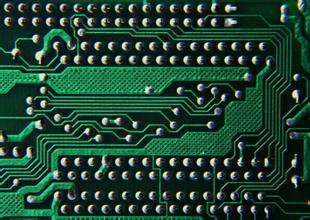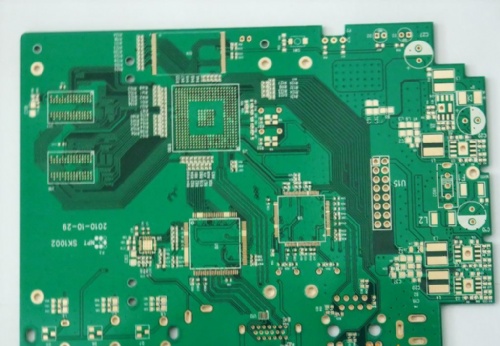-
CN
-
Service Hotline
+8618129931046 Mr. Liao



Medical monitor PCB circuit boards are specialized printed circuit boards that are designed with extreme precision and adhere to strict standards to meet the critical requirements of medical monitoring devices. These devices play a vital role in healthcare settings, providing real - time monitor
 Oct 24, 2025
Oct 24, 2025
 1
1

Dedicated PCB Boards for Bluetooth Modules Bluetooth modules have become ubiquitous in modern electronic devices, enabling short - range wireless communication. Dedicated PCB boards for Bluetooth modules are designed to optimize the performance, power efficiency, and compactness of these modules,
 Oct 23, 2025
Oct 23, 2025
 1
1

PCB Boards for Wi - Fi Modules Wi - Fi modules are essential for enabling wireless local - area network (WLAN) connectivity in a vast array of electronic devices. PCB boards designed to Wi - Fi modules are engineered to support the high - speed data transfer, complex signal processing, and wide -
 Oct 23, 2025
Oct 23, 2025
 1
1

ZigBee modules are widely used for low - power, low - data - rate wireless communication in applications such as home automation, industrial monitoring, and sensor networks. PCB boards designed for ZigBee modules are tailored to meet the specific requirements of this technology, emphasizing ener
 Oct 23, 2025
Oct 23, 2025
 1
1


Pressure sensor adapted PCB (Printed Circuit Board) boards are crucial components that facilitate the seamless integration and optimal performance of pressure sensors in various applications. These PCB boards are specifically designed to meet the unique requirements of pressure sensors, ensuring
 Oct 21, 2025
Oct 21, 2025
 1
1

Photoelectric sensor PCB circuit boards are essential for the proper functioning of photoelectric sensors, which are widely used for object detection, distance measurement, and optical sensing in numerous applications. These PCB boards are engineered to support the unique operational requirements of
 Oct 21, 2025
Oct 21, 2025
 1
1

Dedicated PCB boards for infrared sensors are specifically crafted to meet the unique requirements of infrared - based sensing technologies. Infrared sensors are used for a wide range of applications, including motion detection, temperature measurement, and object identification, and these speci
 Oct 21, 2025
Oct 21, 2025
 1
1

Ultrasonic sensor PCB boards play a vital role in the operation of ultrasonic sensors, which are commonly used for distance measurement, object detection, and level sensing in various fields. These specialized PCB boards are designed to interface with ultrasonic transducers, process the signals
 Oct 21, 2025
Oct 21, 2025
 1
1

I. Core Attributes and Scenario-Specific Parameters Product Positioning As the "micro-hub" of a smartwatch, the high-density PCB core interconnects key components such as the processor, biosensor, and RF module. It addresses four key challenges: ultra-compact integration, multi-signal interferen
 Oct 20, 2025
Oct 20, 2025
 1
1

I. Core Attributes and Scenario-Specific Parameters Product Positioning This flexible printed circuit (FPC) is designed specifically for internal interconnection in TWS earbuds. It addresses three key challenges: wiring in confined spaces, dynamic bending reliability, and multi-signal interferen
 Oct 20, 2025
Oct 20, 2025
 1
1

I. Core Attributes and Scenario-Specific Parameters Product Positioning As the "central nervous system" of a smartphone, the motherboard PCB core carries the interconnection functions of all core modules, including the processor, memory, RF, and camera modules. It addresses the four major pain p
 Oct 20, 2025
Oct 20, 2025
 1
1

I. Core Attributes and Scenario-Specific Parameters Product Positioning This flexible printed circuit (FPC) is designed specifically for internal interconnection in TWS earbuds. It addresses three key challenges: wiring in confined spaces, dynamic bending reliability, and multi-signal interferen
 Oct 20, 2025
Oct 20, 2025
 1
1

1. Core Attributes and Signal Processing Parameters This consumer electronics PCB, designed specifically for smart speaker signal processing units, carries the entire audio signal acquisition - noise reduction - decoding - transmission process. It must balance low signal loss, electromagnetic int
 Oct 20, 2025
Oct 20, 2025
 1
1

PCB circuit boards for display drivers are essential for controlling and driving various types of displays, including liquid - crystal displays (LCDs), organic - light - emitting - diode (OLED) displays, and LED displays. These PCBs serve as the interface between the display panel and the main contr
 Oct 18, 2025
Oct 18, 2025
 1
1

PCB circuit boards for keyboard scanning play a vital role in detecting key presses on keyboards and converting them into electrical signals that can be recognized by a computer or other electronic devices. These PCBs are designed to efficiently scan the keyboard matrix, identify the pressed keys, a
 Oct 18, 2025
Oct 18, 2025
 1
1
